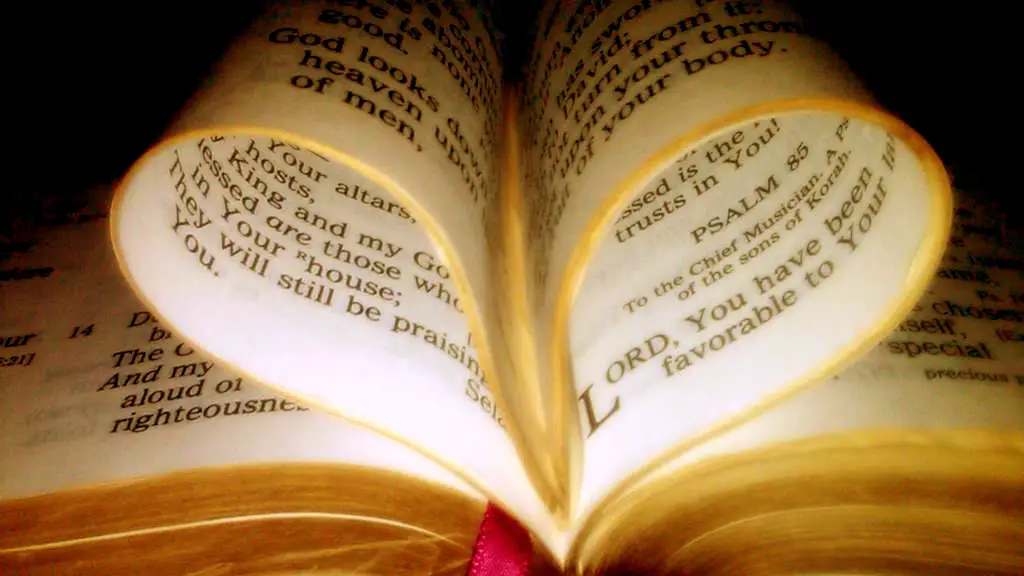The fig tree is mentioned numerous times in the Bible and is significant for a variety of reasons. In the Old Testament, the fig tree is a symbol of fertility and abundance. In the New Testament, the fig tree is a symbol of Christ’s redemption.
The fig tree is also significant because it is the tree that Adam and Eve used to cover their nakedness after they sinned. The fig leaves represent the first attempt at covering sin. But, as we know, fig leaves are not enough. We need the blood of Christ to cover our sins.
So, the fig tree is important in the Bible because it is a symbol of both fertility and redemption. It reminds us that sin has consequences, but that Christ has the power to redeem us.
The fig tree is an important symbol in the Bible, representing the fertility and abundance of God’s blessings. The fig tree is also a symbol of the Messiah and His promised kingdom of peace and prosperity.
What does Jesus say about the fig tree?
The Gospel of Luke tells us that Jesus once told a parable about a fig tree. He said that when we see the leaves on the tree, we know that summer is near. In the same way, when we see certain things happening in the world, we know that the kingdom of God is near. This is a powerful reminder that we should always be on the lookout for signs of God’s kingdom, and be ready to enter it when it comes.
The Church Fathers have interpreted the parable of the Fig Tree as a warning to Christians that they must bear fruits worthy of repentance after their conversion or risk being condemned to Hell. The Catholic Church has subsequently reaffirmed this interpretation, warning Christians that they must take care to lead lives that are worthy of the Gospel.
What does the fig represent
Figs are often associated with sex and fertility because of their role in the generation of humanity. In ancient Greece, certain rituals involved beating men and women with the branches of fig trees to promote fertility.
According to some researchers, it was this fruit that was plucked by Eve and not an apple. Well, the fruit we are talking about is ‘Fig’. In the holy book of Islam, Fig (Anjeer) is mentioned as ‘The Fruit of Heaven’, which belongs to the mulberry family.
What does it mean to sit under a fig tree in the Bible?
This phrase is from Micah 4:4 and refers to the independence of the peasant farmer who is freed from military oppression. This would be a good passage to cite in an essay about the importance of independence and freedom.
The fig tree is a symbol of Israel in the Old Testament, and the cursing of the fig tree in Mark and Matthew and the parallel story in Luke are symbolically directed against the Jews, who have not accepted Jesus as Messiah.
Why did Adam and Eve choose fig leaves?
The expression “fig leaf” is widely used to convey the covering up of an act or object that is embarrassing or distasteful with something of innocuous appearance. This is a metaphorical reference to the Biblical Book of Genesis, in which Adam and Eve used fig leaves to cover their nudity after eating the fruit from the Tree of Knowledge.
The Ficus religiosa, or sacred fig, is a tree that is considered sacred by Hindus, Jains, and Buddhists. The Buddha is said to have found enlightenment by sitting under the sacred fig, which is also known as the bo or pipal tree. Islam also considers some figs to be holy. The Ficus religiosa is native to Asia and is also found in India, Pakistan, and Bangladesh.
What is the forbidden fruit in heaven
The forbidden fruit is an important part of the Bible story of Adam and Eve. It is commonly thought of as an apple, but the Bible never actually says what fruit it was. Regardless, the effects of Eve and Adam eating it were fatal. They were banished from the Garden of Eden and were subjected to a life of hard work and poverty. This story is a warning against indulging in forbidden fruit, as it can lead to negative consequences.
The fig leaves then signify sins; and Nathanael, when he was under the fig tree, was under the shadow of death: so that our Lord seemeth to say, O Israel, whoever of you is without guile, O people of the Jewish faith, before that I called thee by My Apostles, when thou wert as yet under the shadow of death, and sawest Me.
What does a fig leaf tree mean?
The fiddle leaf fig has long been a symbol of fertility, abundance, and good luck. This makes it the perfect plant to give as a gift to someone you want to bring good fortune to.
Fig leaves have been traditionally used for managing diabetes and high cholesterol. The milky sap from the tree (latex) is also used to treat skin conditions like eczema, psoriasis and vitiligo. Some people even apply the sap directly to the skin to treat skin tumors and warts.
What is the spiritual meaning of sacred fig
The sacred fig tree is a very important symbol in the Indian subcontinent. It is associated with the origin and interconnectedness of life. It represents cultural, social, religious and ecological benevolence. The fig tree is known by many names in the Indian subcontinent, including Peepal, Pipal, Ashvatta and Bo tree. The sacred fig tree is a very important symbol of peace in the Indian subcontinent.
In ancient Egypt, pharaohs believed that when they died their souls would encounter a Ficus sycomorus fig tree at the edge of the desert, and that the goddess Hathor would emerge from the foliage to welcome them to heaven. Fig trees are also associated with many Hindu deities.
What tree did Eve eat from?
The serpent tempted Adam and Eve to eat the fruit from the tree of knowledge, which led to their banishment from Paradise. As punishment for their disobedience, God made them leave the Garden of Eden. This event is often used to symbolize the fall of man from a state of innocence.
Bread was a staple in the typical daily diet in the first-century Greco-Roman world, supplemented with limited amounts of local fruits and vegetables, oil, and salt. Bread in first-century Galilee would have been made with wheat or barley flour.
Warp Up
The Fig Tree is important in the Bible because it is a symbol of hope and new beginnings. In the Bible, the Fig Tree is a symbol of the nation of Israel (Jeremiah 24:1-10). The Fig Tree is also a symbol of the Messiah ( Matthew 21:18-22).
The fig tree is an important symbol in the Bible. It is often used to represent the Jewish people or Israel. In the Book of Jeremiah, the fig tree is used to symbolize the nation of Israel. The fig tree is also mentioned in the story of Jesus and the fig tree. In this story, Jesus curses a fig tree because it did not have any fruit. This story is used to symbolize the destruction of Israel.





